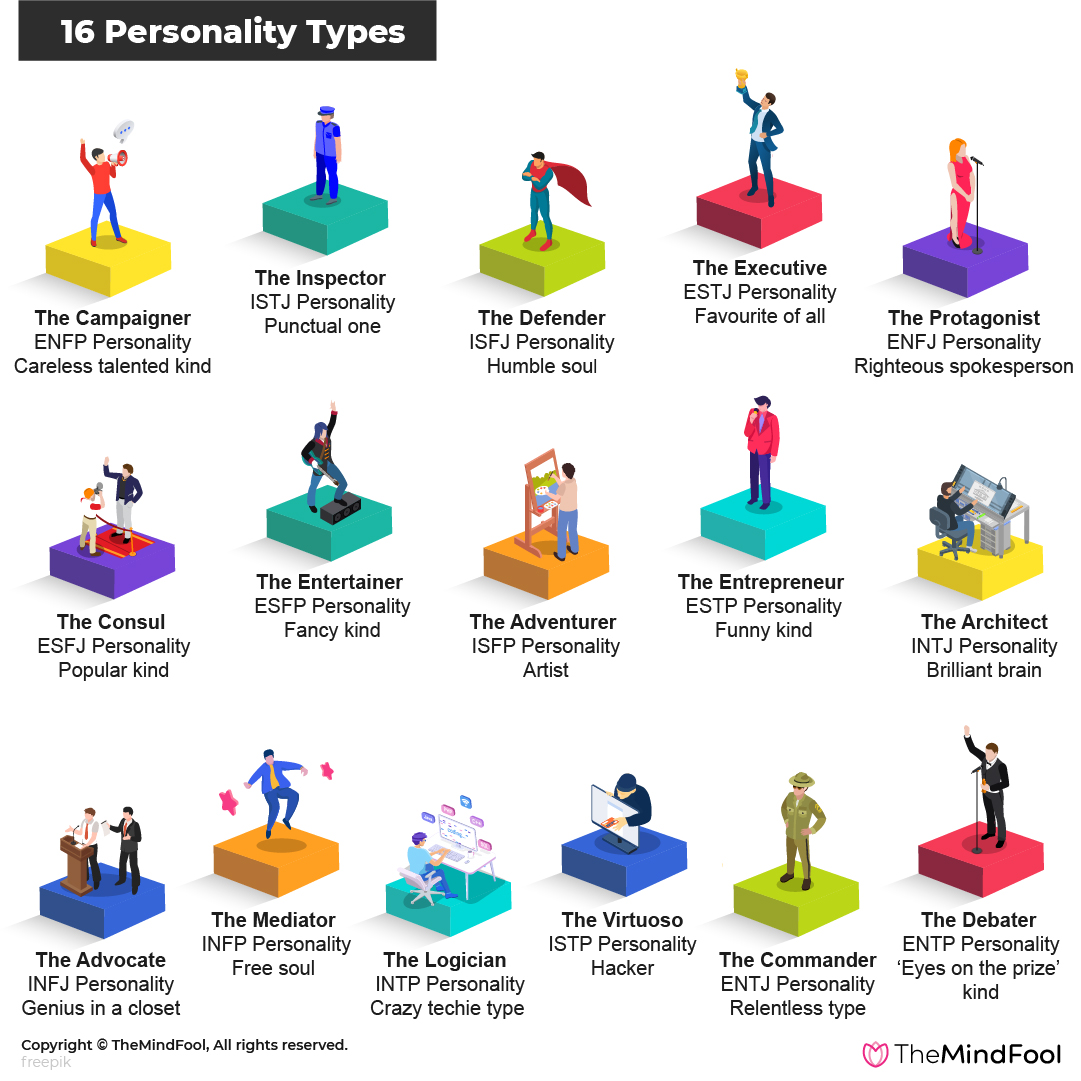Introduction to Personality Psychology and Theories
1/46
There's no tags or description
Looks like no tags are added yet.
Name | Mastery | Learn | Test | Matching | Spaced |
|---|
No study sessions yet.
47 Terms
Personality
The characteristic patterns of thinking, feeling, and behaving that make a person unique.
Personality Psychology
The scientific study of personality and how it influences people's behaviors, thoughts, and emotions.
Four Humors Theory
A theory proposed by Galen and Hippocrates stating that personality resulted from balances or imbalances of bodily fluids: blood (sanguine, optimistic), yellow bile (choleric, irritable), black bile (melancholic, depressed), and phlegm (phlegmatic, calm).
Psychoanalytic Theory
A theory by Freud that states personality is shaped by unconscious drives and early childhood experiences, especially related to sex and aggression.
Id
The primitive, instinctual drives that operate on the pleasure principle.
Superego
The moral conscience that internalizes societal rules.
Ego
The rational part that mediates between the id, superego, and reality, operating on the reality principle.
Repression
The act of pushing threatening thoughts out of conscious awareness.
Defense Mechanisms
Unconscious strategies the ego uses to manage anxiety, such as denial, projection, and rationalization.
Psychoanalytic Therapy
Therapy that shows mixed results; some evidence for effectiveness, but generally less empirically supported compared to newer therapies like cognitive-behavioral therapy.
Literary Truth
Narrative truth that feels meaningful or relatable even if not scientifically verified.
Empirical Truth
Truth that is verifiable by observation or experiment; objective and scientifically supported.
Erik Erikson
A psychologist known for expanding Freud's ideas and for his psychosocial stages of development (e.g., trust vs. mistrust, identity vs. role confusion).
Humanistic Theory
A theory stating that people are inherently good, motivated by a drive for personal growth, and strive for self-actualization.
Core Ideas of Humanistic Theory
Include free will, self-concept, and the importance of personal experience.
Carl Rogers
Known for the theory of self-concept and unconditional positive regard; developed client-centered therapy.
Abraham Maslow
Known for Maslow's hierarchy of needs and the idea of self-actualization as the pinnacle of human motivation.
Idiographic Approach
Studying individuals in depth through case studies, focusing on uniqueness.
Nomothetic Approach
Studying large groups to find general laws or traits that apply broadly.
Personality Trait
A stable, enduring characteristic or pattern of behavior, thought, or emotion.
Core Elements of Trait Perspective
Traits are relatively stable across time and situations, can be measured, and predict behaviors.
Normally Distributed Traits
The idea that most people fall near the average on traits, with fewer people at the extremes (high or low).
Lexical Hypothesis
The idea that important traits are more likely to be encoded into language; the more important a trait, the more likely it is to have multiple words describing it.
Gordon Allport
A psychologist who identified thousands of traits by combing through dictionaries.
Raymond Cattell
A psychologist who studied personality and contributed to the trait perspective. 16PF

Factor Analysis
A statistical method that identifies clusters of correlated traits to find underlying dimensions of personality.
Big Five
A model of five major dimensions of personality: Openness, Conscientiousness, Extraversion, Agreeableness, Neuroticism.
Extraversion (High)
Outgoing, energetic.
Extraversion (Low)
Reserved, quiet.
Agreeableness (High)
Trusting, kind.
Agreeableness (Low)
Suspicious, antagonistic.
Conscientiousness (High)
Organized, dependable.
Conscientiousness (Low)
Careless, impulsive.
Neuroticism (High)
Anxious, emotional.
Neuroticism (Low)
Calm, stable.
Openness (High)
Creative, open-minded.
Openness (Low)
Conventional, prefers routine.
Core Traits of the Big Five
They are broad, stable across cultures and time, and can predict a wide range of behaviors and life outcomes.
Reliability
Consistency of the measure (e.g., getting similar results over time).
Validity
Accuracy; whether the test measures what it claims to measure.
Concerns about Personality Traits
Mischel argued that behavior is often inconsistent across situations, so situations matter more than traits.
Critiques of the Trait Approach
Traits can be poor predictors of specific behaviors in specific situations; overemphasis on consistency; ignores situational influences.
Defenses of the Trait Approach
Traits predict average behavior over time; while behavior may vary in specific instances, overall patterns are stable and meaningful.
Cognitive Dissonance
The discomfort when holding conflicting beliefs or behaviors.
Festinger & Carlsmith Experiment
Showed that people who were paid $1 (vs. $20) to lie said they enjoyed a boring task more, because they had insufficient justification and thus changed their attitude to reduce dissonance.
Bystander Effect
Helping is heavily influenced by the situation, as shown in studies like Darley and Batson's 'Good Samaritan' study.
Importance of Personality Traits and Situation
Both matter: traits predict behavior in general, but specific situations can greatly influence whether a trait is expressed at a particular time.